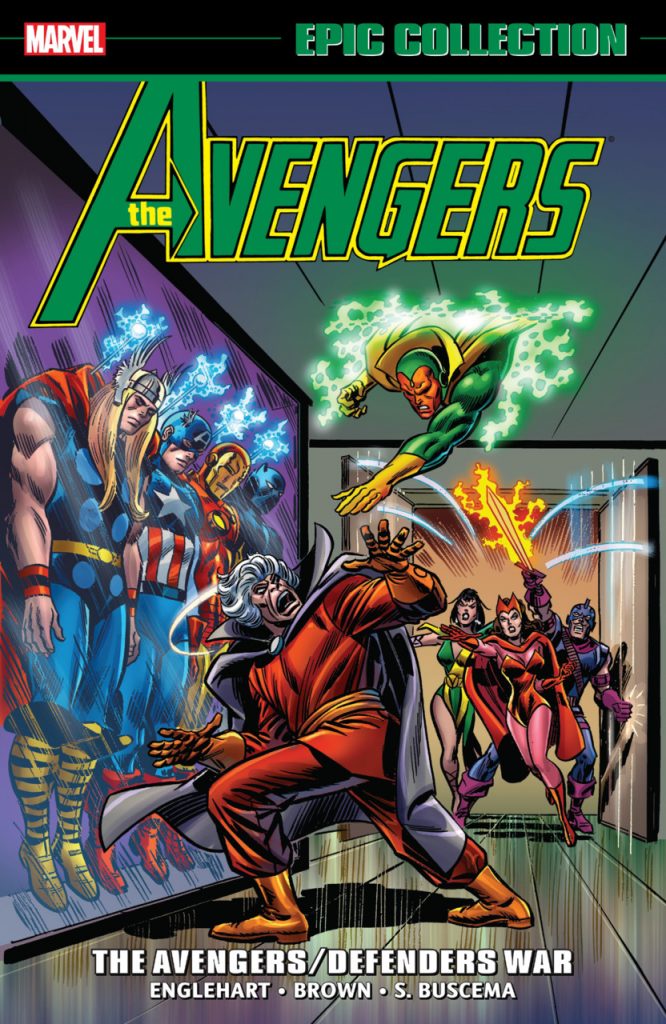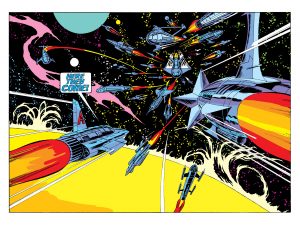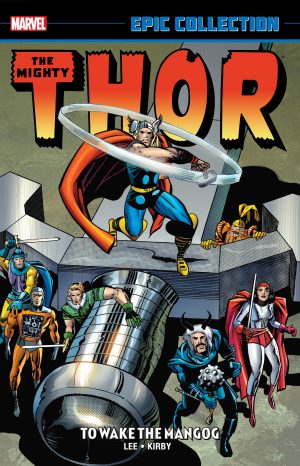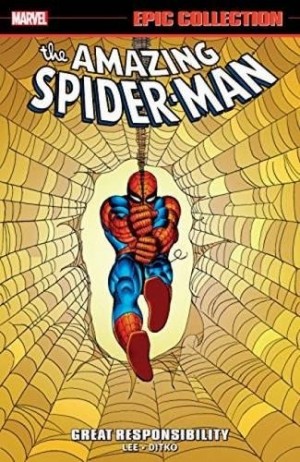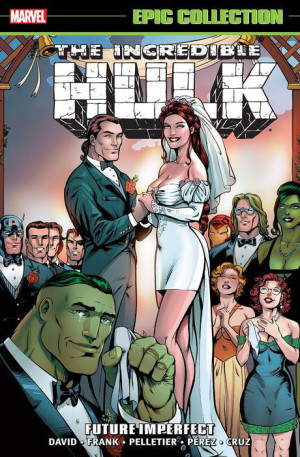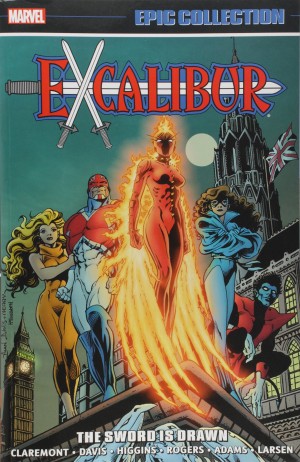Review by Frank Plowright
Steve Englehart pretty well invented the summer crossover event for superhero comics when in 1973 he thought it would be fun to run a connected story between the two team comics he was writing. It opens this collection, and still impresses. As Englehart writes everything there’s a consistency lacking in many later crossovers, and he plots tightly, selected convincing locations for his battles between Avenger and Defender, and chooses the match-ups well. Each team is manipulated, the Defenders by Dormammu, the Avengers by Loki, and the battles concern segments of a mystical device known as the Evil Eye. The Defenders believe it will restore the Black Knight, then transformed to stone, while the Avengers are persuaded they want it for nefarious purposes. This is pleasingly set-up, with Englehart able to sow convincing doubts among the superheroes about the motives of their counterparts.
The other standout story is also a crossover, contrary to perceived wisdom, as Englehart ties into the ambitious space saga Jim Starlin was producing for the Captain Marvel title. It’s the first time the Avengers become aware of Thanos, and Englehart’s portion encompasses the fracturing personal relationships within the Avengers. His core quartet is the Scarlet Witch, the Vision, Mantis and the Swordsman, all characters lacking their own titles, whose destiny Englehart controlled, and amid the general superheroics he frequently switches back to their problems. A third crossover features, this with the Fantastic Four as the Avengers attend the wedding of their former ally Quicksilver to later Avenger Crystal. This is more ordinary, despite some nice art.
The best art here is John Buscema’s powerful pencils decoratively inked by Dave Cockrum (sample page), but while Sal Buscema and Jim Starlin pass muster, too many of the remaining pages are drawn in extremely perfunctory fashion by Bob Brown. There’s also a form of Jack Kirby pastiche from Rich Buckler on Roy Thomas’ unconvincing attempt to lock in 1940s hero the Whizzer as the father of Quicksilver and the Scarlet Witch. The best idea within that is Whizzer attempting superheroics as an old man.
Other stories have an admirable variety about them, but the quality comes in short bursts rather than across complete issues, and is usually character based. The final dissolution of Mantis’ relationship with the Swordsman is astonishingly brutal, and would have repercussions in the following Celestial Madonna. The Scarlet Witch studying true witchcraft is an interesting idea in a dull story, assorted Marvel creators attending the annual Halloween parade in Rutland is fun as they meet the Collector, and there are moments in a nutty story about crime cartel Zodiac deciding to kill every Gemini on the planet. Credit to Englehart for a surprising turn at the end connecting Zodiac with his ongoing disclosures about Mantis.
The best material has previously been available as numerous editions of The Avengers/Defenders War, volumes 12 and 13 of the Avengers Marvel Masterworks series, and in black and white spread over Essential Avengers 5 and 6. That being the case, is there bonus material? There is a fair quantity, but its value as an inducement is questionable. As with many of the Epic Collections, Marvel have dredged up work originally published in their house fanzine FOOM in the 1970s, there’s an article by Thomas about the Avengers, covers from books previously printing these stories, and sketches and original art from some artists involved, and some not.
